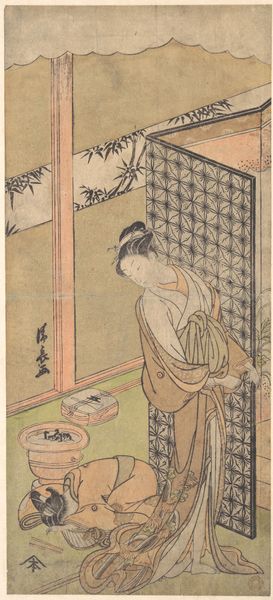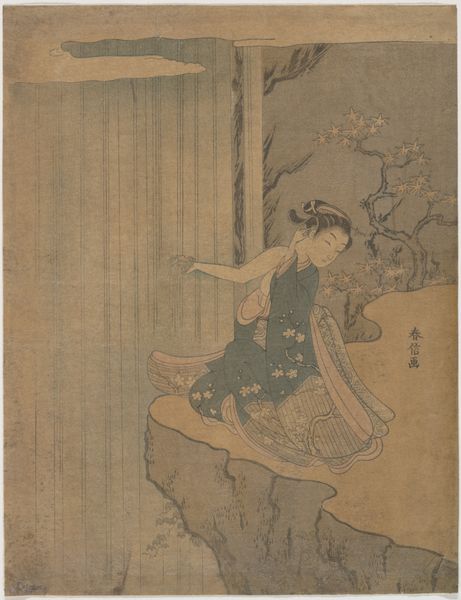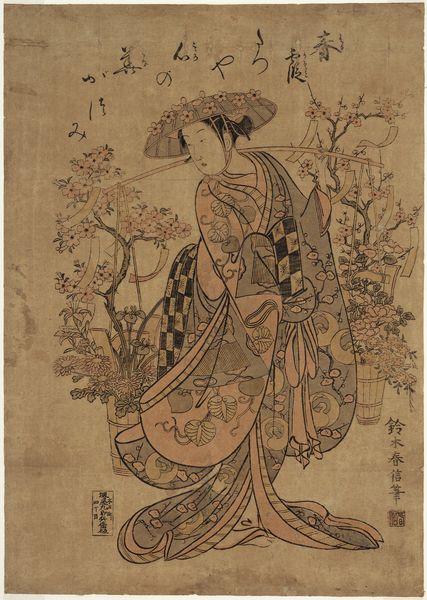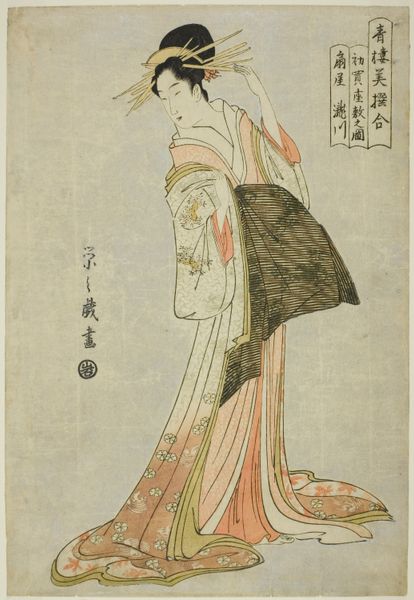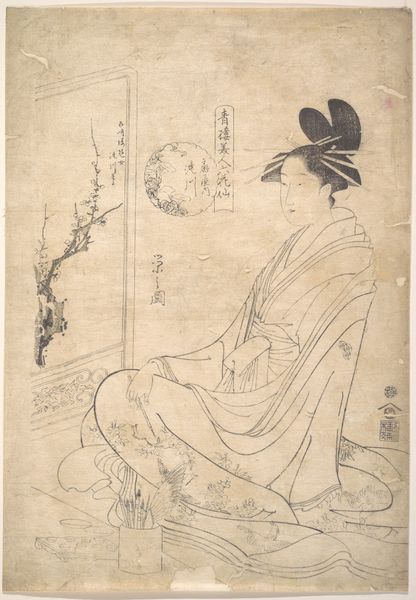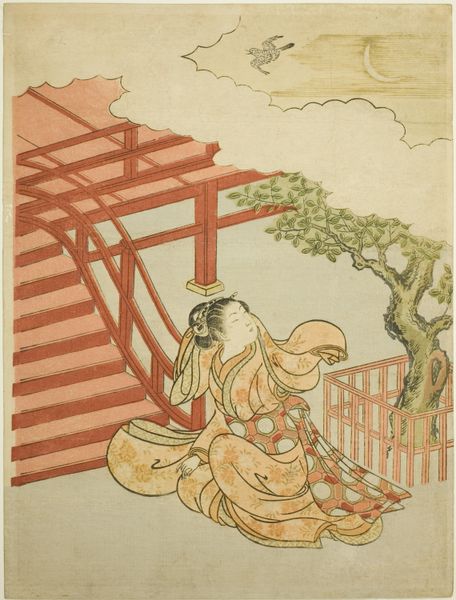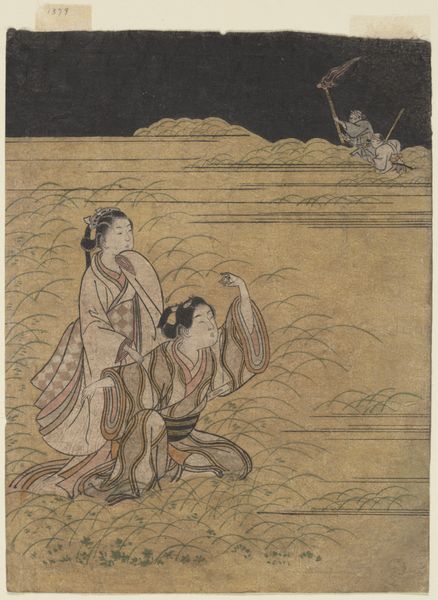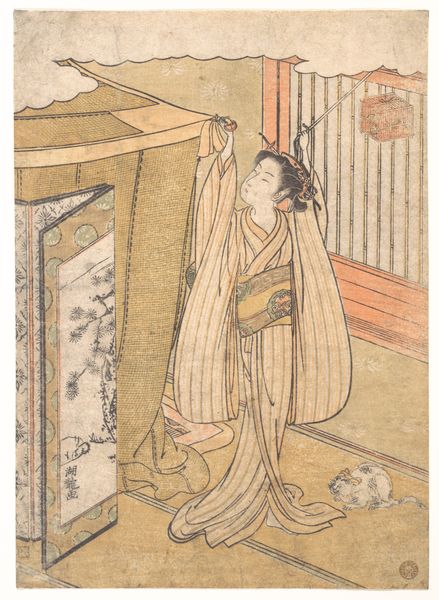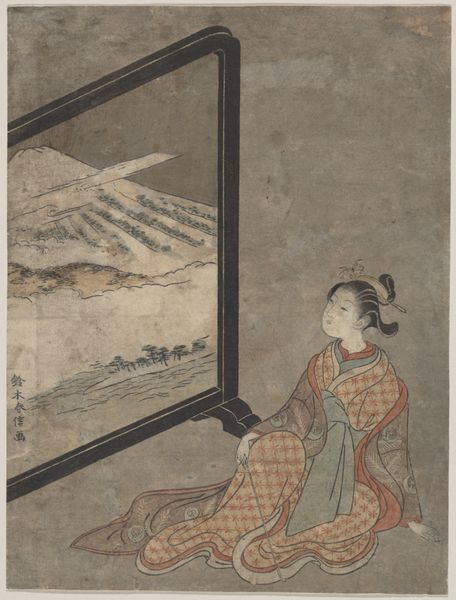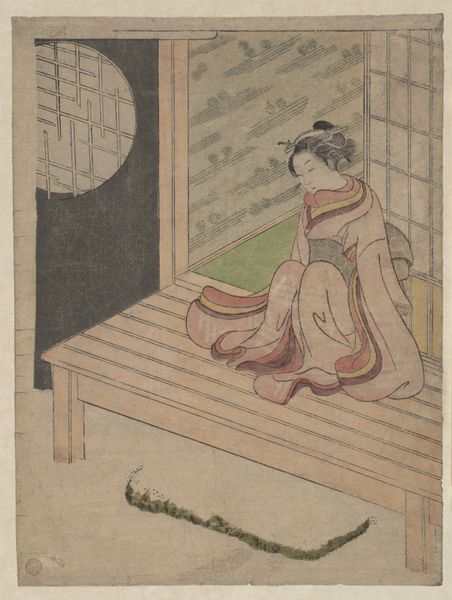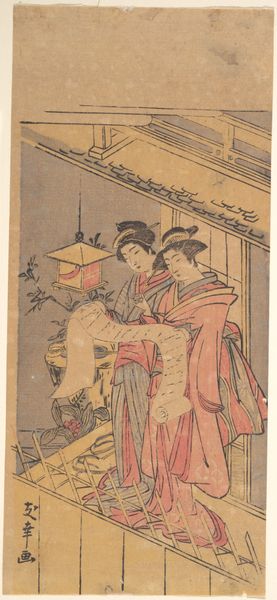
print, woodblock-print
#
portrait
# print
#
asian-art
#
ukiyo-e
#
woodblock-print
#
genre-painting
Dimensions: H. 10 1/4 in. (26 cm); W. 7 5/8 in. (19.4 cm)
Copyright: Public Domain
Isoda Koryūsai created this woodblock print titled "Bush Clover in Province of Omi" sometime in the late 18th century. It depicts two women on a veranda overlooking a landscape. Prints like this were deeply embedded in the social and economic life of Edo-period Japan. They were made for a burgeoning urban audience and were driven by the market economy. The floating world of the Yoshiwara district with its courtesans and kabuki actors became a popular theme for artists. Koryūsai’s earlier works, made under the influence of Harunobu, show courtesans within domestic settings. Later, he moved away from this subject, choosing to depict women of the merchant class. This print shows an interest in landscape, something that was becoming increasingly popular at the time. Historians of art are attuned to the institutional conditions of art making and rely on a variety of resources – from economic data to literary sources to visual comparisons – in order to understand artworks such as this one. The meaning of art is always contingent on its social and institutional context.
Comments
No comments
Be the first to comment and join the conversation on the ultimate creative platform.
